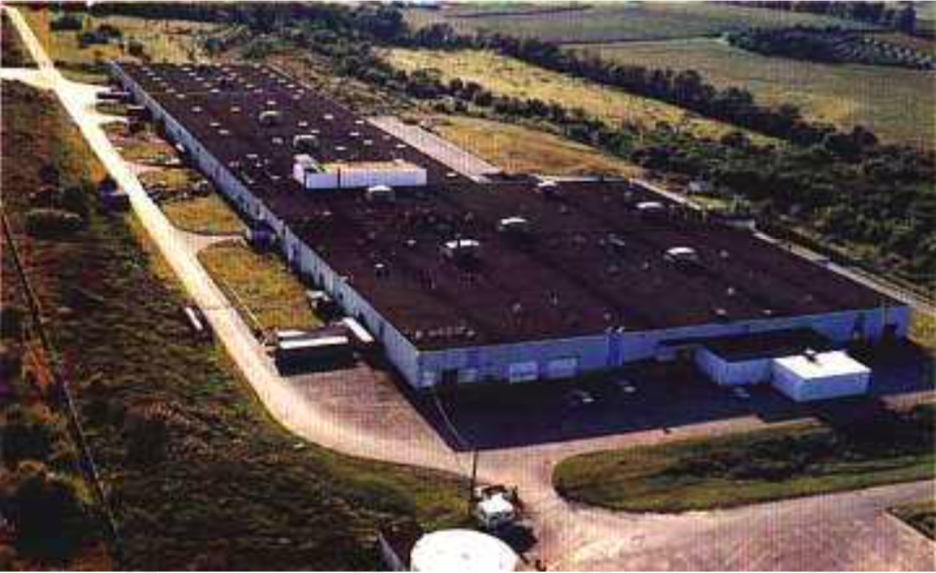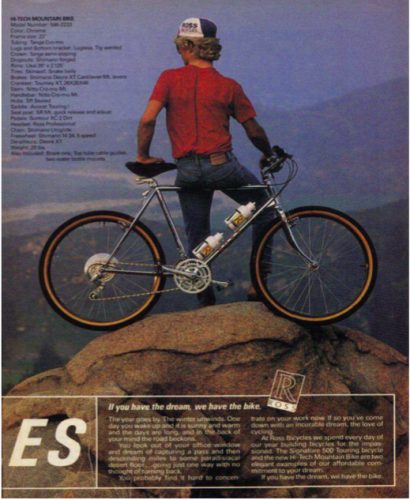For decades, Ross was the third-best-known brand in the U.S. bicycles, behind Schwinn and Huffy, and slotted between those two in volume, price point, and distribution channels. But while it trailed Huffy in unit volume and trailed Schwinn in national reputation, for many years it was second to none in the New York market.
The brand also had a key role in establishing the mountain bike as a product category and kick-starting professional mountain bike racing. And in the 1960s and 1970s, it was one of the key suppliers to what was then a new retail channel: independent bicycle dealers.
Albert Ross founded Ross Galvanizing Works in Brooklyn’s Williamsburg neighborhood in 1940. The company initially made pipe fittings for industry and for the Navy during World War II. After the war, the company was renamed Chain Bike Company and focused on making bikes, first at several locations around New York and then at a factory in Allentown, Pennsylvania, that opened in the 1970s. The company was renamed Ross Bicycles in 1982.
Ross was one of a handful of brands that helped establish independent, non-Schwinn, bike shops starting in the 1970s. Until then, bikes were mostly sold at either auto parts stores, department stores, or Schwinn stores.
Through the 80s, Ross’ brand was strongest in its home market. “There was one market where Ross outsold Schwinn and that was Manhattan and Long Island,” said Pat Cunnane, who was a Ross regional sales manager in the 1980s.
Ross was to New York what Schwinn was to Chicago: the home brand. Rand International, the importer that bought the Ross brand out of bankruptcy in 1988, and its owners, the Goldmeier family, were based on Long Island, and still are. The company then was managed by father Larry and sons Allen and Steven.
The regional strength might explain some of the emotion behind the Ross family’s efforts to regain the brand, and for the Goldmeiers' desire to hang on to it. (see related story)

Cunnane didn’t work for Ross after the bankruptcy, but suspects the brand still enjoys some home town cache with the Goldmeiers.
“Basically if you were in New York, where the Goldmeiers were, Ross was your Schwinn. For them to get the Ross brand was the most amazing thing in the world to them,” he said.
After the bankruptcy, Cunnane joined a new rival, BCA, which launched in Pennsylvania just down the road from Ross’s Allentown factory. "I enjoyed working for the Ross family," Cunnane said. "They gave me a lot of opportunity and the associated responsibility."
Ahead of the curve
In Ross’s long history, it was often best known for its low-cost bikes. But for a brief period in the 1980s it was a leader in the developing market for performance mountain bikes.
Ross was well ahead of the curve when it came to mountain bikes, showing its first production MTB at the 1982 Interbike show. The following year the company supported the Ross Indians, the first professional mountain bike race team. Team members included Joe Sloup and Cindy Whitehead. Ross also promoted a three-day stage race in Massachusetts that helped get the sport off the ground and showcase its team.
According to some reports, Ross was selling 100,000 mountain bikes a year in the mid-1980s.
 “If he had been able to keep it going, Ross would been a real player. He could have been Specialized or Trek,” said one veteran industry executive, who was a Ross dealer in the 1980s. "I sold thousands of those bikes," he said.
“If he had been able to keep it going, Ross would been a real player. He could have been Specialized or Trek,” said one veteran industry executive, who was a Ross dealer in the 1980s. "I sold thousands of those bikes," he said.
Ross began moving production out of Allentown to Taiwan in about 1986.
Albert Ross' son Sherwood “Jerry” Ross, Randy Ross’s father, repurposed the Allentown factory to make ammunition boxes for the U.S. government. That program turned out to be disastrous and was blamed for Ross’s decision to declare bankruptcy in 1988.
Jerry Ross went to work for Rand, the new owner, for about five years.
Jerry Ross was well-known in the industry, serving as president of the Bicycle Institute of America (predecessor of the BPSA) and the Bicycle Manufacturers Association. After leaving Ross he became a professional expert witness in product liability cases. He passed away in 2013.
Under Rand, Ross made some attempts to establish itself again at the high end of the mountain bike market. It made some partnerships with high-end brands, including Waterford frames, and brought out frames using a novel thermoplastic carbon fiber construction technique. In 1995, Rand said made plans to build a factory on Long Island to build thermoplastic and carbon fiber frames domestically. Also that year, Ross bought Barracuda Bicycles, saying it would use the Colorado-based brand to break into the high-end dealer market. Ross had marketed a Barracuda bike model for decades, its version of the Schwinn Sting-ray "muscle bike."
Related stories:
- Ross family wants to bring back the bike brand. The brand's owner says it never went away
- After son's accident, Goldmeier focuses on adaptive sports
Many of these ventures didn't seem to bear fruit, although Rand continued to sell millions of bikes through mass merchant retailers bearing brands licensed from Disney and others.
In 2007 Steven and Allen Goldmeier sold most of Rand's assets to Mark Worksman for $9.9 million and other considerations. The Goldmeiers planned to remain with the company as executive vice presidents. When Worksman fell behind on payments to the Goldmeiers and other debtors, the brothers forced the company into Chapter 7 bankruptcy and eventually regained some of its assets, including the Ross and Barracuda bicycles trademark.
In 2013 the trademark registration was transferred from Rand to Century Sports, a subsidiary of the Goldmeiers’ import business, Millenium Products Group. Century Sports renewed the registration in 2014.


